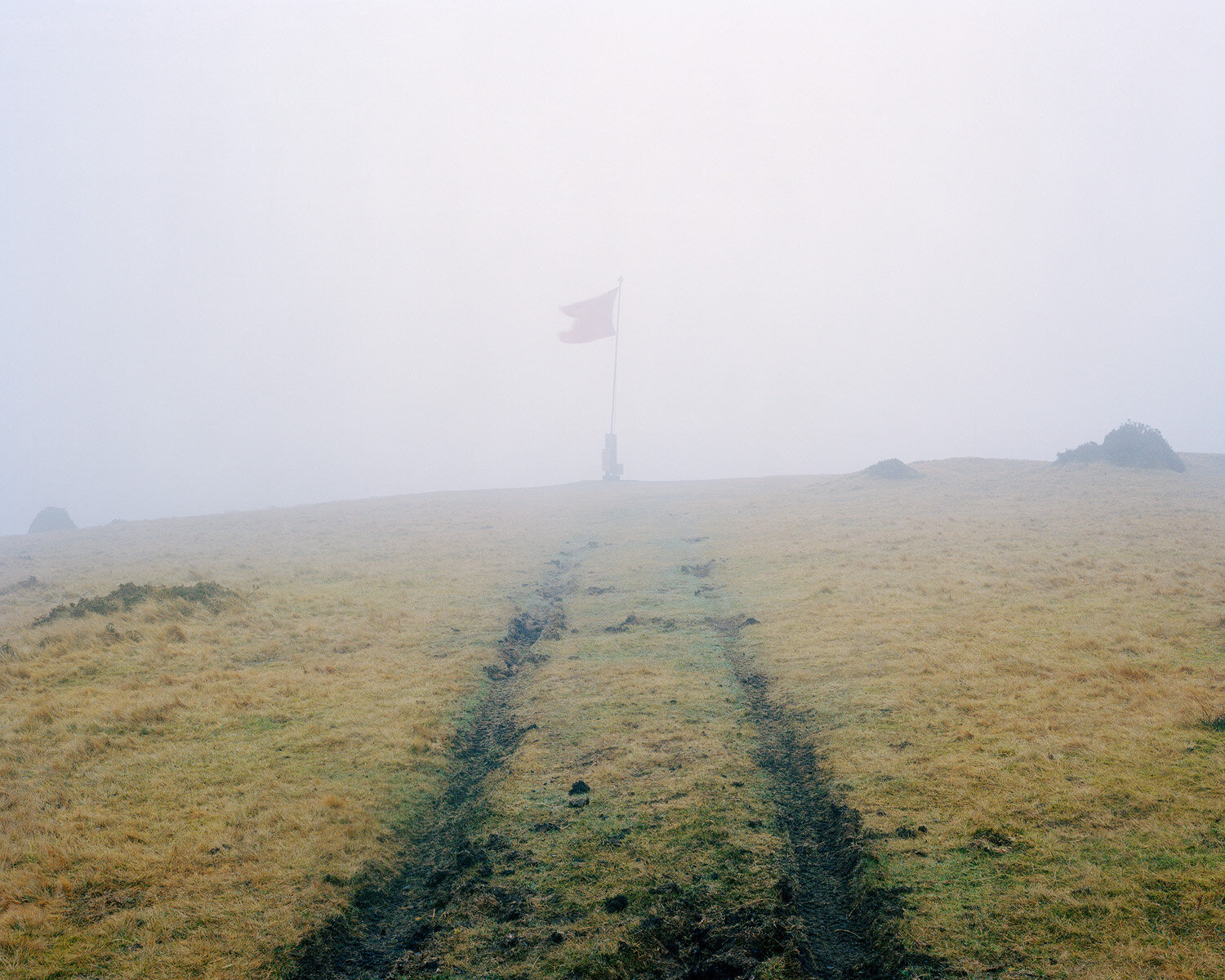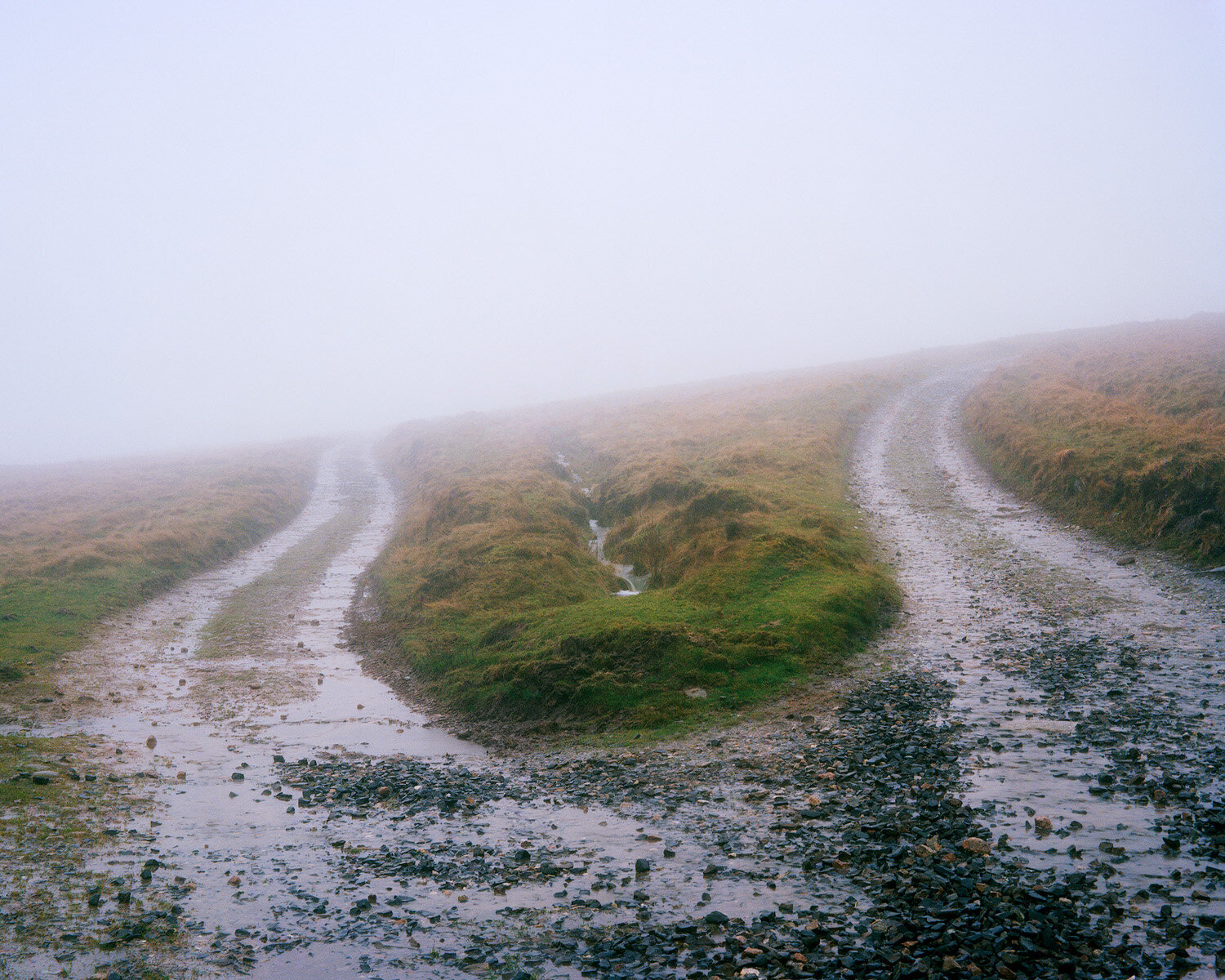Nicholas J.R. White: The Militarisation of Dartmoor
© Nicholas J.R. White
By Lana Nauphal
Nestled in the south-west of England, Dartmoor National Park is one of the country’s largest, and wildest, open expanses of land. Standing largely unchanged since before the dawn of history, its windswept moors, imposing granite tors, and fog-filled valleys exemplify a distinctively powerful landscape: 400 square miles of pure, timeless nature. Over the centuries, Dartmoor’s evocative terrain has inspired countless myths and legends—tales of thieving pixies, spectral beasts, and haunted graves— as well as the works of many artists and writers, from R.D. Blackmore to Agatha Christie. In 2012, then in his final year at Plymouth College of Art, photographer Nicholas J. R. White was similarly drawn to Dartmoor, but for a reason one might not initially suspect: namely, its use as a military training ground by the British Ministry of Defense.
© Nicholas J.R. White
Dartmoor has been used as a site for military training since the Napoleonic Wars in the early nineteenth century. Today, the Ministry of Defense’s Dartmoor Training Area consists of five training ranges which in total take up about forty-two squares miles, or just over eleven percent of the national park’s territory. The public has access to these moorland ranges, except when they are in use for live firing; red flags hung on tors indicate when caution must be taken. And so, with his heavy Sinar studio camera and tripod in tow, White hiked up to the moors from his parents’ house four times a week to explore the military compounds, and to chronicle their effect on the quietude of Dartmoor National Park.
© Nicholas J.R. White
White’s images artfully capture the subtle tension that exists between the training area’s man-made settlements and the national park’s natural environment; in White’s portrayal of this power dynamic, the wildness of the natural world takes primacy. The all-pervasive fog is so present it is almost personified— R.D. Blackmore would be proud—and image after image, it engulfs buildings, flag-posts, and horizons. There’s not a human being in sight; it’s the land itself that feels alive, in the vigor of its snow-covered rocks and windswept shrubbery, which are given center stage in White’s composition.
© Nicholas J.R. White
Despite the power accorded to the natural world in “The Militarisation of Dartmoor,” the series also acknowledges the indisputable damage these military practices have inflicted on the environment. One image in particular jumps out as an emblematic depiction of this injury: the frozen-blue earth, having been trampled in countless different directions, bears the scars of the troops’ bootprints, which fill up all four corners of the photograph. The damage manifests itself physically, of course— in the discarded bullet casings and artillery rounds littered in the mud, as other examples— but it lingers as well on a kind of metaphysical level. What does it mean for a national park—a space intended for recreation and tranquility, surrounded by nature’s beauty— to be appropriated for the practice and preparation of large-scale acts of violence?
© Nicholas J.R. White
While the few interior shots of the personnel accommodations at the Dartmoor Training Area showcase a desolate emptiness—which only enhances the sense of eeriness already imbedded in Dartmoor’s natural landscape—they also hint at the potential return of life to the ranges: pillows and folded bedding are neatly placed on the beds, as they await new occupants. With the withdrawal of British troops in conflict areas like Afghanistan, White notes, “the shape and appearance of the Dartmoor Training Area… will be manipulated further to accommodate the needs of a contemporary fighting force.” Indeed the military ranges in the heart of the glorious Dartmoor National Park aren’t going anywhere anytime soon, and White himself recognizes the training areas as an integral part of the park’s “cultural heritage.” In a way, they also stand as a symbol of our own cultural heritage— humanity’s endless push and pull between nature and artifice, between peace and destruction.
You can see more of Nicholas J. R. White’s work on his website, and Instagram.












